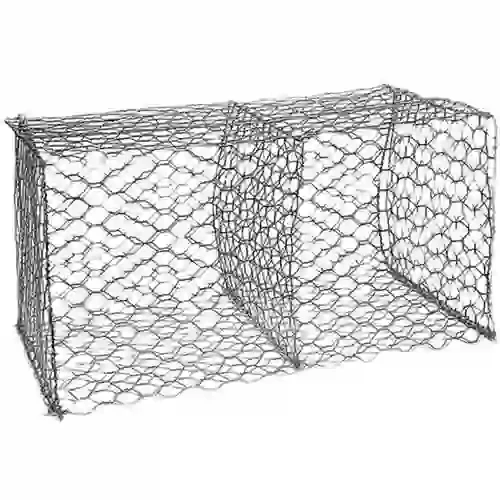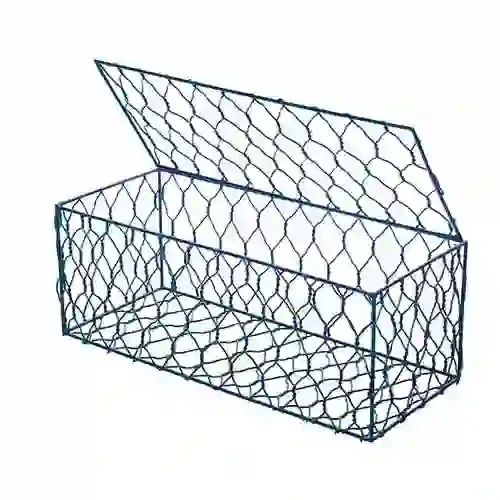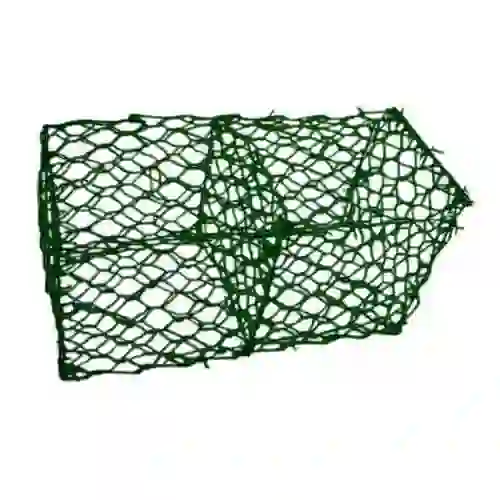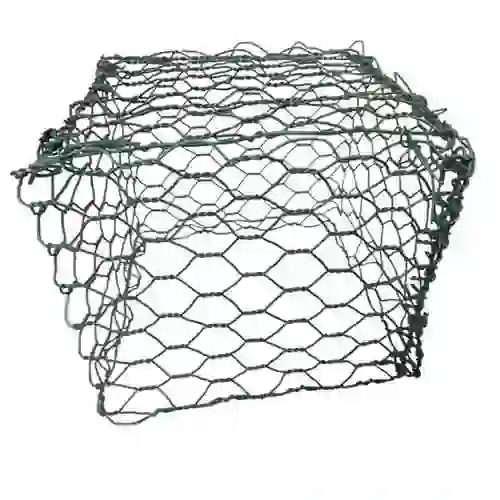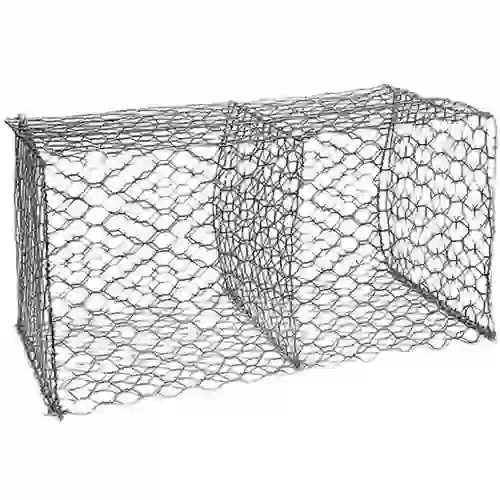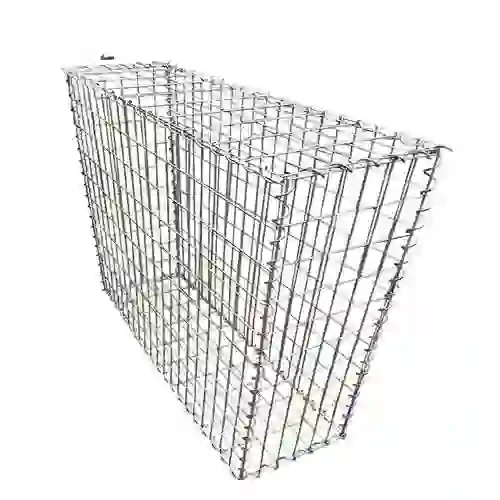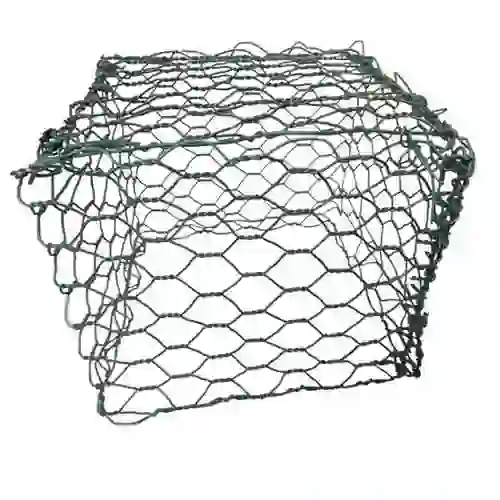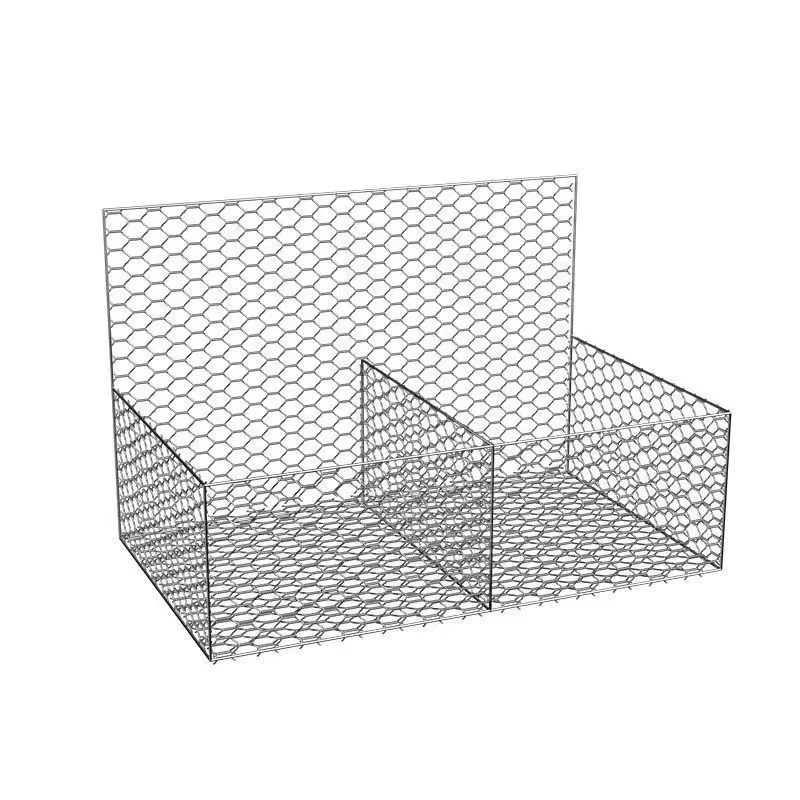-
 Phone:
Phone: -
 Email:
Email:

High-Tensile Rock Netting for Slope Protection
Harnessing advanced engineering to safeguard infrastructure and lives. Explore the latest trends, technologies, and solutions in rock netting slope protection, from high-tensile steel mesh to comprehensive stabilization systems like the robust Gabion Wall.
Discover Our Gabion SolutionsIndustry Trends: The Growing Imperative for Slope Stabilization
The global demand for effective slope protection is surging. According to a market analysis by Grand View Research, the geosynthetics market, a core component of slope engineering, is projected to reach USD 15.3 billion by 2028. This growth is driven by several key factors:
- Infrastructure Expansion: Rapid development of highways, railways, and commercial projects in challenging terrains necessitates robust rockfall mitigation.
- Climate Change: Increased frequency of extreme weather events like heavy rainfall and freeze-thaw cycles exacerbates slope instability.
- Enhanced Safety Regulations: Stricter government standards for public and worker safety mandate the implementation of certified protection systems.
- Focus on Sustainability: A shift towards eco-friendly solutions that integrate with the natural landscape, where systems like rock netting slope protection excel over traditional concrete.

The Anatomy of a Rock Netting System: From Steel to Safety
Understanding the manufacturing process is key to appreciating the quality and reliability of a rock netting slope protection system. It's a journey of transforming high-grade raw materials into a life-saving engineered product, governed by stringent international standards.
1. Material Selection
High-tensile steel wire (Strength > 1770 N/mm²) with low carbon content is selected for optimal strength and ductility.
2. Wire Drawing & Coating
Wire is drawn to precise diameters and then coated with Zinc or Galfan (Zn-Al alloy) for superior corrosion resistance (ASTM A975).
3. Mesh Weaving
Coated wires are woven into a double-twisted hexagonal mesh pattern. This structure prevents unraveling if a wire breaks.
4. PVC Coating (Optional)
For harsh chemical or marine environments, an additional layer of PVC is extruded over the Galfan coating for maximum lifespan.
5. Quality Control
Rigorous testing for tensile strength, coating thickness, and mesh integrity according to ISO 9001 and ETAG 027 standards.
Technical Specifications: A Comparative Overview
Not all rock fall netting is created equal. The specific application dictates the required technical parameters. Below is a table outlining typical specifications for different types of rock netting slope protection systems, including high-tensile steel mesh and related solutions like gabions.
| Parameter | Standard Rock Netting (Drapery) | High-Tensile Steel Grid (e.g., TECCO) | Gabion Wall Baskets (as a toe structure) |
|---|---|---|---|
| Material | Class A Galvanized Steel Wire | High-Tensile Steel Wire (≥1,770 MPa) | Galfan or PVC Coated Steel Wire |
| Wire Diameter | 2.2mm - 4.0mm | 3.0mm - 4.0mm | 2.7mm - 3.4mm (Mesh), 3.4mm - 4.4mm (Selvedge) |
| Mesh Type | Double-Twist Hexagonal | Rhomboidal or Square Grid | Double-Twist Hexagonal |
| Aperture Size (D) | 80x100mm (D=80) | 65x115mm to 100x175mm | 80x100mm or 60x80mm |
| Tensile Strength (Mesh) | 45 - 60 kN/m | 150 - 200+ kN/m | 50 - 70 kN/m |
| Coating Standard | ASTM A975, EN 10223-3 | EN 10244-2 (Galfan) | ASTM A975, EN 10223-3, ASTM A641 |
| Primary Function | Contains small rockfalls, guides debris | Active stabilization, holds entire rock mass | Retaining wall, erosion control, slope toe support |
| Typical Lifespan | 25-50 years | 50-100+ years | 50-120+ years (with PVC coating) |
Product Spotlight: The Gabion Wall - A Foundation of Stability
While flexible rock netting is ideal for facing unstable slopes, many projects require a robust foundational or retaining structure. This is where Wiremesh Pro's Gabion Wall excels. As a mass-gravity retaining system, it often works in tandem with rock netting slope protection to provide a complete, engineered solution.
Gabion Wall vs. Concrete Wall: Key Advantages
*Qualitative comparison against a traditional cast-in-place concrete retaining wall.
Typical Applications for Gabion Systems

Gabion walls are versatile, serving critical roles in civil engineering and landscaping projects, often as part of a larger rock netting slope protection strategy.
Technological Advantages of Modern Slope Protection Systems
Superior Durability
Utilizing Galfan (Zinc-5% Aluminum) and optional PVC coatings, our systems offer a design life exceeding 100 years, even in corrosive environments, as per EN 10244-2 standards.
Ecological Integration
The mesh and gabion voids can be filled with soil and vegetated, promoting biodiversity and creating a living structure that blends seamlessly with the environment.
Inherent Permeability
Unlike rigid concrete walls, our mesh and gabion systems are free-draining, preventing hydrostatic pressure buildup—a leading cause of retaining wall failure.
Unmatched Flexibility
The double-twist hexagonal mesh can withstand significant differential settlement without structural failure, making it ideal for unstable ground conditions.
High Energy Absorption
High-tensile rock fall netting is designed to deform and absorb the kinetic energy of falling rocks, safely containing impacts that would shatter rigid barriers.
Cost-Effectiveness
Reduced material costs, minimal need for heavy machinery, and faster rockfall netting installation times result in significant project savings compared to conventional methods.
Choosing Your Partner: Wiremesh Pro vs. Generic Suppliers
The success of a rock netting slope protection project depends heavily on the quality of materials and the expertise of the supplier. Here’s how Wiremesh Pro stands out.
| Feature / Service | Generic Supplier | Wiremesh Pro |
|---|---|---|
| ISO 9001:2015 Certification | ✖ | ✔ |
| Material Traceability & Mill Certificates | Often Unavailable | ✔ Guaranteed |
| Geotechnical Design Support | ✖ | ✔ Expert Consultation |
| Custom Sizing & Solutions | Limited | ✔ Fully Customizable |
| Compliance with ETAG 027 / ASTM | Unverified | ✔ Independently Tested |
| Comprehensive Installation Guides | Basic | ✔ Detailed Manuals & Videos |
| Product Warranty | 1-5 Years | ✔ Up to 20+ Years |
| Post-Sale Technical Support | Limited | ✔ Dedicated Support Team |
Custom Solutions & Rockfall Netting Installation
Every slope is unique. A one-size-fits-all approach is a recipe for failure. Our process begins with a thorough analysis of your project's specific geotechnical challenges.
Our Customization Process:
- Site Assessment: We analyze slope angle, rock type, water conditions, and potential failure modes.
- Geotechnical Modeling: Using specialized software, we model rockfall trajectories and energy levels to determine the required system performance.
- System Selection: We recommend the optimal combination of rock netting, anchors, and foundational structures like Gabion Walls.
- Detailed Design: We provide comprehensive drawings and plans for a safe and efficient rockfall netting installation.
Installation is performed according to strict guidelines, such as those in the European Technical Approval Guideline (ETAG 027) for fall protection systems, ensuring every anchor and seam contributes to the system's overall integrity.
Request a Custom Quote
Real-World Applications: Case Studies
Our rock netting slope protection systems are proven in the field across diverse and challenging environments. Here are a few examples of our successful deployments.
Case Study 1: Highway 101 Coastal Protection
Client: State Department of Transportation
Challenge: A steep, weathered rock cut along a major coastal highway was experiencing frequent, dangerous rockfalls, leading to road closures.
Solution: A hybrid system was designed. High-tensile rock fall netting (TECCO-type) was installed on the upper slope to actively contain the rock mass. At the toe of the slope, a PVC-coated Gabion Wall was constructed to act as a catch-wall and prevent erosion from wave action.
Result: Rockfall incidents were eliminated, ensuring public safety and uninterrupted traffic flow. The vegetated gabion wall has now blended into the coastal landscape. Road closures due to rockfall have decreased by 98% in the first two years post-installation.
Case Study 2: Open-Pit Mine Highwall Stabilization
Client: Global Mining Corporation
Challenge: Unstable highwalls in an active open-pit mine posed a significant risk to workers and heavy machinery below. Operations had to be halted periodically.
Solution: A comprehensive drapery system using heavy-duty galvanized rock netting was deployed. The system was designed for rapid installation between blasting cycles to minimize operational downtime.
Result: Worker safety was drastically improved, and costly operational delays were virtually eliminated, leading to a productivity increase of over 15% for the affected mining section.
Visualizing the Installation Process
Watch this video to understand the typical procedures and equipment involved in a professional rockfall netting installation project. Proper technique is paramount to system performance.
Our Commitment to Expertise, Authority, and Trust (E-E-A-T)
In a high-stakes industry like geotechnical engineering, trust is everything. At Wiremesh Pro, we build that trust through unwavering commitment to quality, backed by verifiable credentials and transparent processes.
15+ Years of Experience
Decades of hands-on experience in manufacturing and supplying geotechnical solutions.
ISO 9001 Certified
Our manufacturing processes adhere to the highest international quality management standards.
Global Partnerships
Collaborating with leading engineering firms and geological survey institutions worldwide.
Unbeatable Warranty
We stand by our products with industry-leading warranties on material and performance.
Delivery, Warranty, and Support: Our Promise to You
- Standard Delivery: Typical lead time for standard stock is 2-4 weeks. Custom orders are typically fulfilled within 6-8 weeks.
- Product Warranty: All our rock netting slope protection products come with a comprehensive material warranty against manufacturing defects, with specific terms based on coating type (e.g., up to 20 years for PVC-coated products).
- Customer Support: Our team of geotechnical specialists is available to provide technical support, from initial design consultation to installation queries. We are your partners for the entire project lifecycle.
Frequently Asked Questions (FAQ)
Standard galvanization is a coating of pure zinc. Galfan is a superior, high-performance coating composed of 95% zinc and 5% aluminum. According to ASTM B117 salt spray tests, Galfan provides 2 to 4 times the corrosion resistance of traditional galvanization of the same thickness. For any long-term rock netting slope protection project, Galfan is the highly recommended minimum standard for a longer design life.
A PVC (Polyvinyl Chloride) coating is added over the Galfan-coated wire for projects in extremely aggressive environments. This includes coastal areas with high salt spray, industrial zones with chemical exposure, or river applications with acidic water. The PVC layer acts as a robust chemical barrier, protecting the underlying metallic coating and dramatically extending the system's lifespan to potentially 120+ years.
ETAG 027 is the "Guideline for European Technical Approval of Falling Rock Protection Kits." It is a comprehensive standard that outlines the testing procedures and performance requirements for systems designed to stop rockfalls. It involves full-scale impact testing to classify a system's Maximum Energy Level (MEL) absorption capacity. Specifying a product that complies with ETAG 027 ensures the rockfall protection netting has been rigorously tested and its performance is verified, providing a high degree of safety assurance.
Absolutely. This is one of the key environmental benefits. Simple rock netting (drapery) allows natural vegetation to grow through it. For active systems or in conjunction with erosion control mats, the mesh can be hydroseeded. The roots of the vegetation then interlock with the soil and the mesh, creating a "green" living composite structure that further enhances slope stability and aesthetic appeal.
A passive system (like a drapery or catch fence) is designed to control or stop rocks after they have detached from the slope. A simple rock netting drapery guides falling debris safely to the toe of the slope. An active system, on the other hand, is tensioned and anchored to the slope to prevent rock detachment in the first place. It applies a stabilizing pressure to the rock face. High-tensile steel grids like TECCO are typically used for active stabilization.
Maintenance is generally low but crucial. It involves periodic inspections (typically annually and after major storm or seismic events) to check for damage to the mesh from rock impacts, assess the condition of anchors and cables, and clear any significant accumulation of debris that could overload the system. Minor repairs can be made by patching damaged mesh sections. For our Gabion Wall systems, inspection for settlement or bulging is also recommended.
Anchor selection is critical and depends on the geotechnical conditions (rock quality, soil type) and the loads imposed by the system. Common types include grouted rock bolts for competent rock, mechanical anchors for moderately fractured rock, and soil nails or helical anchors for soil slopes. A qualified geotechnical engineer must perform a pull-out test on-site to verify the capacity of the chosen anchor type before full-scale rockfall netting installation begins. We can provide guidance on anchor selection based on your project data.
Secure Your Project with the Industry's Best
Don't compromise on safety or quality. Whether you need high-performance rock netting, robust Gabion Walls, or expert guidance on your slope stabilization project, Wiremesh Pro is your trusted partner.
Contact Our Experts TodayReferences & Further Reading
- Lambert, S., & Bourrier, F. (2013). Design of rockfall protection fences using a trajectory analysis approach. Natural Hazards and Earth System Sciences, 13(6), 1491-1503. View Publication
- European Organisation for Technical Approvals. (2008). ETAG 027: Guideline for European Technical Approval of Falling Rock Protection Kits. EOTA. Access EOTA Guidelines
- Geo-Institute of the ASCE. (2024). Discussions on Slope Stability and Reinforcement. Geotechnical Special Publication (GSP) Series. Browse ASCE Library
- Discussions on Geotechnical Engineering and Rock Mechanics. Eng-Tips Forums: Geotechnical Engineering section. Visit Forum
-
Metal Products Company Galvanized Cable for SaleNewsAug.06,2025
-
Maintenance of Rock Wall with Wire MeshNewsAug.06,2025
-
Loop Tie Wire Cost Effective OptionsNewsAug.06,2025
-
High Quality Cable Cu Xlpe Swa Pvc SupplyNewsAug.06,2025
-
Durable Hexagonal Mesh Wire ProductsNewsAug.06,2025
-
Baling Wire Direct Reliable ServiceNewsAug.06,2025
-
Wire Mesh for Every Need: A Practical SolutionNewsJul.25,2025

